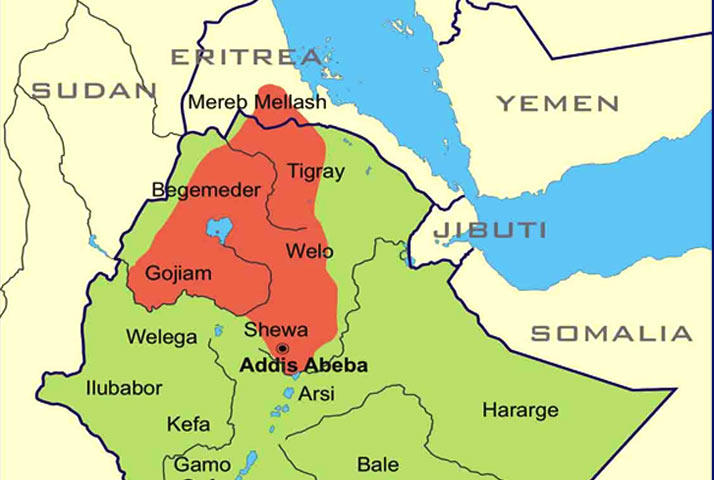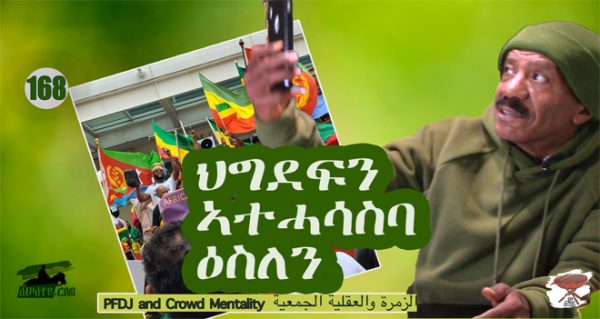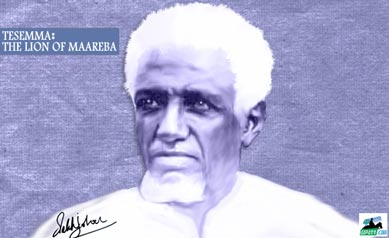Negarit: 325: Is’t Time for Another Cyclical War in the Horn of Africa?
It’s a strange blessing for the Horn of Africa—especially Eritrea—that Abiy Ahmed is tethered by Ethiopia’s massive debts to the IMF and World Bank. The Ethiopian National Bank is suffocating under a load of non-performing loans accumulated over decades. Had Abiy’s forecasts played out the way he hoped, the region could have been dragged into another devastating war already.
Before launching his war on Tigray, Abiy promised it would be a quick “mop-up” operation—just fifteen days, he said. As the war dragged on, he declared that the Tigray forces had been scattered like flour. But the “flour” he tried to scatter returned—reconstituted, fired up. One Ethiopian satirist summed it up: “The flour you scattered came back to you as baked bread.”
Ethiopia’s Economy: A House of Cards
Ethiopia teeters on the edge of economic collapse. The people carry the burden of debt, inflation, and unemployment. After five years of civil war and ethnic strife, the economy is a shell of itself.
In 2023, a $2 billion loan from the IMF and World Bank offered temporary relief. But the local currency, the birr, continued its freefall—from 87 to 145 per dollar. Real estate projects defaulted en masse, leaving the Commercial Bank reeling. Meanwhile, 90% of Ethiopians living in rural areas have been cut out of the economy completely.
There’s a severe fuel shortage. Transport is unreliable. And capital is bleeding out of its ability to cope with the crisis.
The Energy Illusion
The long-touted Grand Ethiopian Renaissance Dam (GERD) is still not fully functional. As of August 2024, only 4 of its 13 turbines were commissioned. Despite the hype, energy remains rationed and unstable. Even Addis Ababa suffers frequent blackouts, except for a few gleaming areas funded by high-profile investments in the city center.
The country’s power grid is overloaded. So is its population—128 million as of 2023. And with thousands moving to cities to escape rural stagnation, public infrastructure is cracking under pressure.
Agriculture and Fertilizer Woes
Farmers are reeling from soaring fertilizer prices. While subsidies exist, they don’t reach most farmers. The result: declining yields, rising food insecurity, and further strain on the economy.
A Ballooning Military
Officially, Ethiopia’s defense budget sits at $1.3 billion. But unofficial estimates suggest it’s much higher. The Ethiopian National Defense Force is said to have over 500,000 active troops and another 130,000 in reserve. Continuous conscription pushes those numbers even higher.
Despite the economic crisis, Abiy still toys with the idea of military confrontation—if only he could afford it.
Education in Ruins
The war upended education across Tigray. Four universities shut down. In 2022, the business campus of Mekelle University was bombed. Millions of students lost access to education, and reconstruction is sluggish and unsatisfactory.
The Tigray Factor
The war against Tigray was brutal. Backed by Amhara forces and with Eritrean intervention, federal troops beat back the Tigrayan advance that nearly reached Addis Ababa. International pressure halted the conflict, leading to the now-ineffectual Pretoria Agreement.
Tigray lies in ruins. Political unity is fractured. Infrastructure is broken. And the loss of Western and Southern Tigray remains unresolved, and resentment still simmers.
The Amhara Factor
The Amhara, once dominant, are now sidelined. Fano, their regional militia, is fragmented—divided by ethnicity, region, and leadership. Disillusionment is growing, and fragmentation is weakening the possibility of a collective action.
The Eritrean Factor
Abiy knows Eritrea is still a potential wild card. Though he doesn’t show it, he fears another intervention from the north. Quietly, Ethiopian sources suggest he’s just biding his time, waiting for President Isaias Afwerki, now 80, to age out of power.
But that might be a long wait. Despite his age and health speculation, Isaias remains active. Eritrea has no clear succession plan. And it’s not impossible that he outlives Abiy.
Abiy’s best strategy now seems to be stall and survive. He can’t afford a war—politically or financially. But he has proved to be a risk taker if not a gambler.
A Region Full of Grievances
The TPLF also wants Abiy gone. But they cannot afford another war without a strategic alliance—especially with Eritrea. Even then, nothing is guaranteed. Revenge, betrayal, and deception are the cornerstones of Horn of Africa politics. Tigray’s elite ensure the old grudges remain fresh.
Eritreans also hold deep grievances. There’s been no compensation for Ethiopia’s decades-long occupation, which displaced around 500,000 people—many still languishing in refugee camps. Each new conflict adds more to the toll.
Observation: The Curse of Myth, Religion, and Stagnation
What hinders the Horn of Africa is not only conflict or poor governance. The region is still held hostage by superstition, myth, and hearsay—believed and propagated as truth. Political decisions are shaped by legends. Justice and reason have no seat at the table.
Until people confront the burdens of old thinking and choose secular, rational systems, they will keep sinking deeper. Today’s regimes, despite their rhetoric, function like theocratic rule: no justice, no truth, no salvation—neither in this world nor the next.
conclusion
Eritrea has not changed since independence and is ruled by the PFDJ, the only legitimate and ruling party. As things stand, change can only come through internal implosion. Reflect on the following scenarios:
- If Eritrea is weak, would the Tigray forces be tempted to attack it? Could any party do the same?
- Is a TPLF-PFDJ alliance likely to target Abiy?
- If the PFDJ and the TPLF form an alliance, would the Amhara join?
- Could the parties and rebels form a coalition like the one that defeated the Derg in 1991?
Regional politics are as fluid as they are fragile.
The future?
We’ll know it when the smoke rises from the Sistine Chapel chimney.





Awate Forum